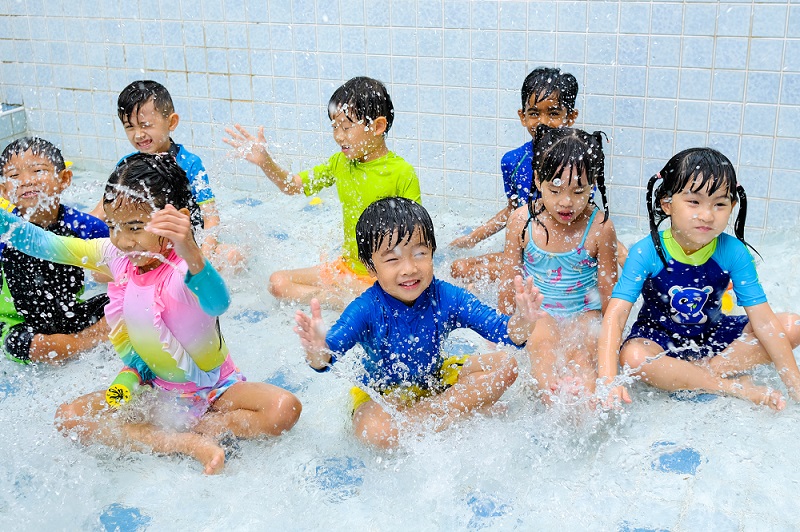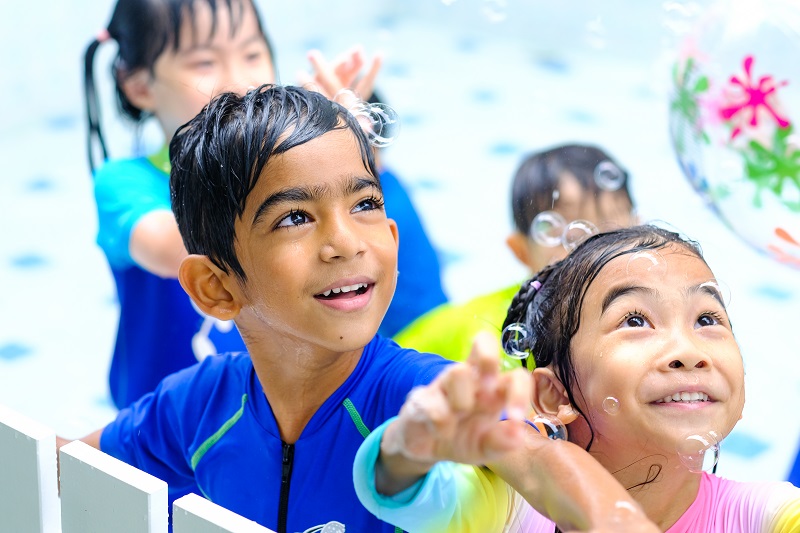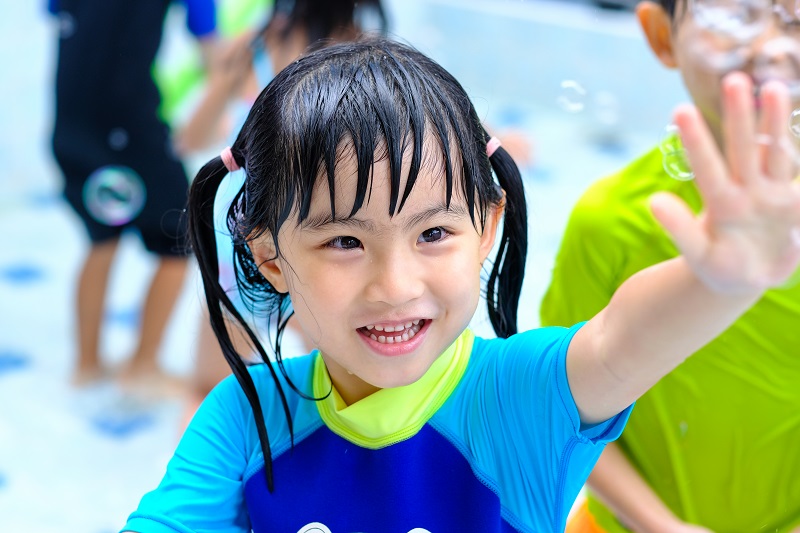
Water playgrounds, or play structures that incorporate water, are becoming ever more popular in Singapore.
From the tall water jets of the Far East Organization Children’s Garden at Gardens by the Bay, to the gentle slopes and runnels of the Bishan Park water play, and the colourful dinosaur structures at Causeway Point, water play has become one of the many fun and exciting ways children can blow off steam on the weekends.
But why is water play more than just fun – and what can your child learn when preschools incorporate water play into their curriculum?
Why is learning important for play?
According to ECDA, play “aids in the development of language, motor, creativity, problem solving and social skills”. It is no surprise that children learn best through play – after all, it is how they develop and explore the world at their own pace.
Water sensory play can provide children with the right mix of factors that stretch their growth to the max!
What exactly constitutes water play?
Water play does not necessarily mean that children must get into their swimsuits and run around under fountains and jets, or sit in little streams of water.
In many preschools in Singapore, water play can be as simple as children standing or sitting around a water table or a large tub where water is incorporated into play.
Scoops, pails, sponges, squeeze bottles, funnels and rubber squirts are all examples of toys and props that can be used during water play. Natural materials like sand, sticks and leaves can be part of water play too.

1. Water play aids in the development of gross and fine motor skills
The development of gross and fine motor skills is crucial during early childhood.
Actions like pouring, squirting, splashing and stirring, as well as the ability to transfer water from one receptacle to another, are all important motions that lead to increased fine motor skills and hand-eye coordination.
Full-body water play also works a child’s muscles well, as they move through the resistance of water. You can always tell how much effort a child has put into water play when you see how fulfilled and exhausted they are by bedtime!

2. Water play introduces new textures to children
Water itself is fascinating to children.
You can pour it into bowls and spoons, squirt it, and splash it at each other. It gets onto hair or clothes and makes them wet.
Some preschools may include ice cubes in water play – introducing them to the concept of water that becomes solid when it is extremely cold. Soap and bubbles also offer children a different textural experience – soap can be slimy, while bubbles showcase beautiful, glimmering rainbows across their surfaces.
Of course, children love popping bubbles, which is another teaching moment altogether, as children learn to make larger bubbles, to make bubbles stick together, and how to touch a bubble without bursting it.
3. Water play introduces mathematical and scientific concepts to children
As the children pour water from one container to another, they discover that a larger container can hold more water while a smaller one holds less. They understand concepts like full or empty, and more or less, as well as concepts like half-full, or overflowing.
Displacement is another concept that they can pick up from water play. When they put a large or heavy item into water, the object will displace water – but not always. They also learn that no matter what receptacle they pour water into, the water will always take the shape of that container. These are all basic concepts that lay the foundation for more advanced concepts later on.
4. Water play builds children’s vocabulary
There are countless words that children can pick up in the course of their water play. These words may not be used in their usual everyday interactions, and so they help to build up their vocabulary.
For example, they may learn to name different types of equipment – ladles, sieves, buckets, funnels, and water wheels. They may also learn various vivid verbs such as – splash, squirt, squeeze, stir, whisk, and swish.

5. Water play reinforces ideas of safety and cooperation
During water play, it is important to reinforce certain safety rules such as no running on wet surfaces, no pushing, and no splashing.
While water is fun to play with, it also has some risks. Children can therefore learn concepts of safety and responsibility during water play to ensure that everyone has fun without getting hurt.
They also exercise their social skills as they play together with other children, learning to share, cooperate, and work towards common goals.
Water play in preschools in Singapore
Many preschools in Singapore, especially play-based ones, incorporate water play into their weekly curriculum one way or another. Here at Kiddiwinkie Schoolhouse, we believe that water sensory play is a wonderful way to stretch our children’s creativity and imagination while harnessing the power of learning through play. Most of our centres offer water play as one of the activities that your children can enjoy.
Our teachers can share with you more about how water play and sensory learning can benefit your child’s early development. Book a tour to find out more about why Kiddiwinkie Schoolhouse is one of the best preschools to partner you in your child’s growth.
Follow us on social media to stay updated on our latest updates and happenings:





